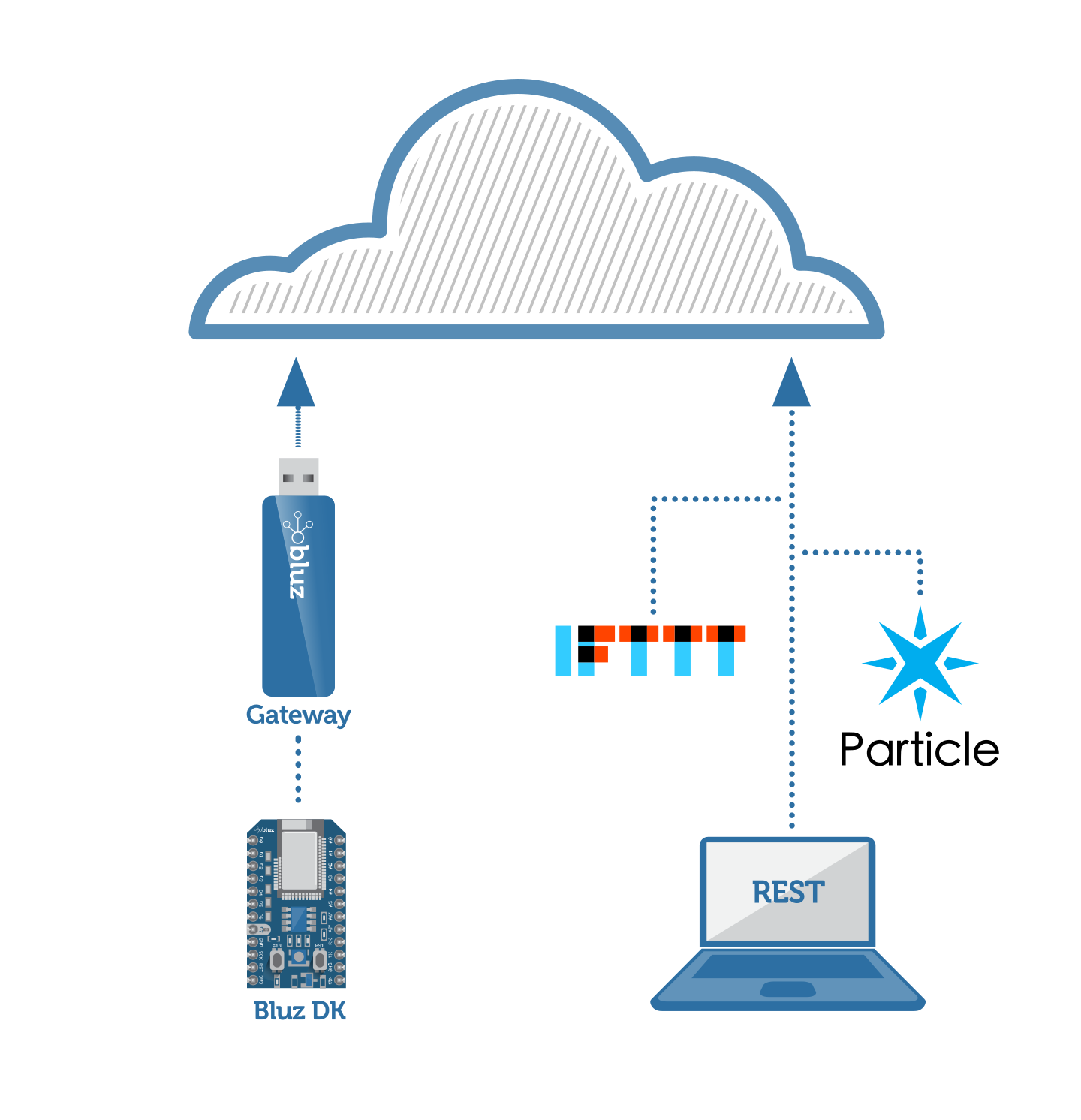Bluetooth LE is ideal for Internet of Things applications where many low powered sensors or devices feed data through a gateway and out onto the internet. An optimal solution would move away from the use of smartphones, which are not always available, and move to a dedicated hardware gateway that can run off a mains power supply. This allows the battery powered devices to stay connected and available at all times around a central hub.
A centralized hardware gateway can use any type of back-end connection (WiFi, Cellular, Ethernet, etc.) to forward this traffic. Further, the gateways can be placed ideally for maximum coverage around the back-end protocol. For example, multiple BLE<->WiFi gateways can be placed on the outer edge of a WiFi router, providing a wide coverage area.

There are two other major considerations for this type of deployment: security and accessibility. A simple IP enabled gateway can take data from the Bluetooth LE device and forward it to a server somewhere on the internet, but this may not be very secure. First, the data on the Bluetooth LE link is only as secure as the encryption built into BLE, which has been shown to be breakable. Second, the IP data from the gateway to the server must be encrypted or it can easily be sniffed. Ideally, data would be encrypted from end to end, from the BLE device to the server. This makes any insecure link in the chain irrelevant.
Once the link from the BLE device to a server is established, accessibility of the data and device is paramount. The data should be real time and allowed to be consumed by multiple other services, such as IFTTT, Webhooks, and data collectors. The device should also allow for control, the ability to send commands to the device from remote endpoints.
For accessibility of hardware devices, one can look to other types of internet services for guidance. Models such as Publish/Subscribe and RESTful API's are the modern language of the internet and can be used with hardware devices to make them easily accessible. Instead of direct communications over lower layer protocols, such as TCP/UDP, devices can be accessed much like other web services. This makes development and integration simpler and more cost effective.
Bluz, an open source development kit for the nrf51822, aims to meet these goals. Along with the main development kit, a series of gateways are provided which can hook multiple boards to the internet through WiFI, Cellular, or Ethernet. Data is secured and encrypted from the MCU running on-board all the way to the end user. Accessibility is provided by the Particle ecosystem, which opens a RESTful API to all the devices. This allows for easy integration into modern web apps and design practices. Allowing a device to trigger an SMS message upon a certain event, or controlling a piece of hardware from a website becomes an incredibly simple task.

Bluz is fully open source and can provide a framework for modern Internet of Things applications powered by Bluetooth LE. Any or all of of the stack can be ported to any Nordic enabled device, opening up a whole new level of accessible and secure hardware. For more information, you can visit the bluz website.


